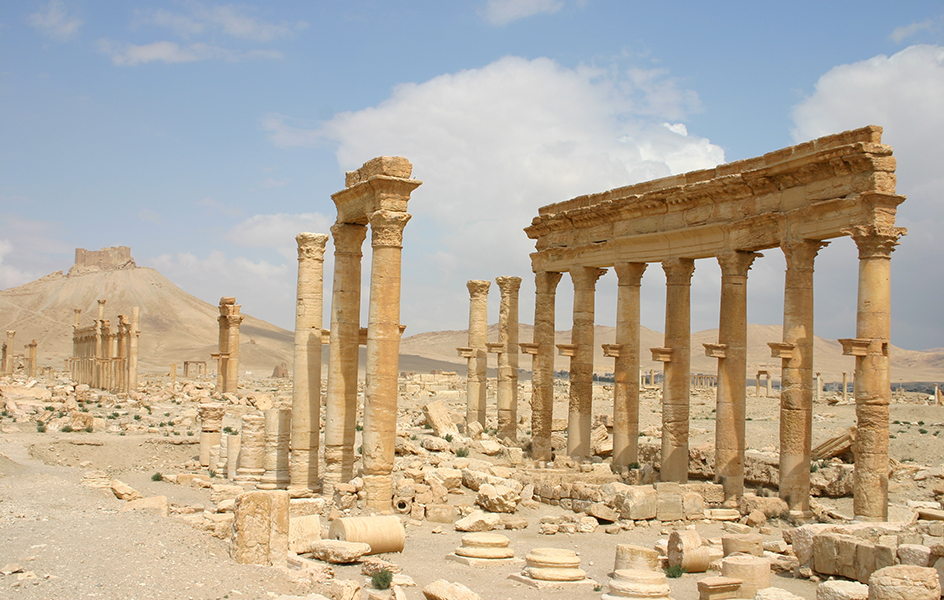Palmyra, << pal MY ruh, >> was an ancient Syrian city, about midway between the eastern coast of the Mediterranean Sea and the Euphrates River. Palmyra was built around a desert oasis on an important trade route between the Roman and Persian empires. Traveling caravans stopped at Palmyra, bringing great riches and a variety of people and cultures. The temple of Palmyra’s chief god, Bel, is typical of the mixture of cultures. Although Bel was an eastern god, the temple’s architecture is Roman.

By the A.D. 160’s, Palmyra had come under Roman control. Palmyrene camel troops served in the Roman army. Roman troops helped protect Palmyra. But when Persia invaded Syria about 260, Rome had no troops to spare for Syria’s defense. Under Septimius Odenathus, a Palmyrene prince, Palmyrene forces turned back the invading Persians. In 262, Odenathus became Rome’s supreme military commander on the eastern frontier. He died in 267, and his widow Zenobia succeeded him.
Zenobia, a vigorous and able ruler, tried to extend her rule over Egypt and all Asia Minor. Her troops seized land from Rome. But the Roman emperor Aurelian captured Zenobia in 274 and destroyed Palmyra. Emperor Diocletian partly restored the city in the late 200’s. In the mid-500’s, Emperor Justinian used it as a fortress to defend the eastern frontier against Persia. Palmyra fell into decline after Arab forces gained control in 637. In 2015, Islamic State terrorists took control of the Palmyra area and destroyed many ancient structures. The group was driven from the area in 2017.
